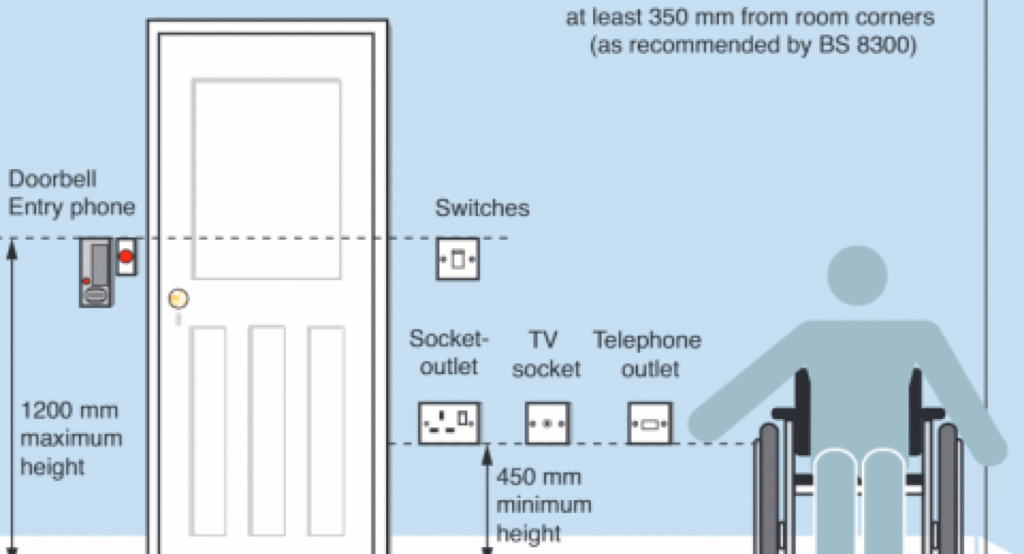General Rules

- All plugs and socket outlets must be 3-pin type.
- Provide an adequate number of sockets in each room.
- In sub-power circuits:
- Use only 3-pin, 16A sockets.
- Each sub-circuit can supply a maximum of 2 sockets with total load not exceeding 3000W.
- Appliances requiring more than 16A must be controlled by a double-pole switch.
Height and Positioning

- Standard Guidelines:
- 25 cm above floor (general use).
- 130 cm above floor (worktops, kitchens).
- Not less than 130 cm in bathrooms.
- Part M Building Regulations (for accessibility in new buildings):
- Sockets: bottom at 45 cm above floor.
- Switches: top at 120 cm above floor.
- Applies to habitable rooms in new builds.
- Exceptions: garages, kitchens, or dwellings designed for limited reach.
- Not mandatory for replacements or extensions, but good practice for safety and convenience.
- For kitchen worktops → leave 15 cm clearance above worktop to avoid cable damage.
Types of Switches
- Toggle Switches → standard household.
- Push Button Switches → intermittent use.
- Pilot Light Switches → show power status with indicator light.
- Dimmer Switches → adjustable lighting, energy saving.
- Smart/Automated Switches → manual or wireless control.
Layout Planning
- Place switches near doorways/staircases for convenience.
- Maintain 150 mm clearance from other outlets.
- Keep sockets away from heat sources (e.g., ovens).
- Plan extra sockets for heavy appliances (fridge, oven, computers).
Modern Features
- Slim design saves space.
- Durable: fire- and heat-resistant materials.
- Aesthetic options: available in colors/textures (plastic, glass, wood, etc.).
Installation Steps (Quick Guide)
- Turn off power at breaker.
- Remove old device, check wire colors (Live, Neutral, Ground).
- Connect wires to correct terminals.
- Secure new switch/socket and replace cover plate.
- Test with voltage tester before use.
Safety Tips
- Use insulated tools and proper PPE.
- Avoid overloading sockets.
- Use quality or Type-C sockets for reliability.
- Hire a licensed electrician if unsure.

